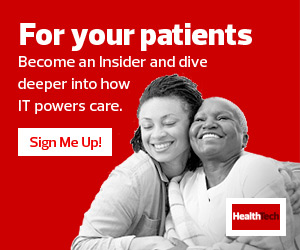Patient Portals Enable Digital-First Healthcare
These days, chatbots handle the initial communication in a personal portal, such as rescheduling appointments, Brient says. The handoff to staff at the front desk is seamless, he says, when a bot is unable to answer a question.
“The AI would understand that we're off the path and it doesn’t know how to deal with the request, so we transfer it to the front desk,” Brient says.
Portals send notifications via email or text message when they have lab results available to review, an incoming secure message from a provider or a reminder for an upcoming appointment.
“A properly implemented patient portal adds breadth and depth to the relationship between the patient and provider,” says Jerold Greer, CIO at Daymark Recovery Services, a North Carolina-based psychiatric services provider that uses NextGen’s PxP Patient Portal and EHR software.
Patient portals have also evolved from refrigerator magnet appointment reminders to online systems that let patients schedule appointments and communicate with providers, Greer says. They enable synchronous, or continuous, engagement between patients and providers.
“The patient portal is a key component of our Patient Experience Platform,” says Cheryl Lejbolle, vice president of solutions at NextGen Healthcare. “It is a personalized, secure website that enables patients to manage their health and interact with their healthcare team. That’s really the purpose of the portal.”
EXPLORE: How digital-first strategies are shaping healthcare.
Daymark provides psychiatric care to patients before they end up in a hospital emergency room, in front of law enforcement or in jail, Greer says. Daymark uses patient portals as a “repository” to record a patient’s overall health progress.
The organization has successfully enrolled 40,000 patients in its patient portal. Greer cites the Stage 2 requirements of the federal government’s Meaningful Use program governing electronic medical records as an impetus for getting patients enrolled in the portal.
Through the patient portal, Daymark gives patients a progress meter based on what they should be doing in the current stage of their lives. Completing a healthcare exam could score patients 50 points, and they could also gain points for maintaining adherence to their diabetes or hypertension regimens, Greer says.
“Thus far, it has been one of the most well-received things we’ve done with the portal,” he says. “It becomes a talking point between the care manager and the patient on how to achieve a better score.”
Greer says Daymark is exploring how it could reward patients for a high progress meter.
How Patient Portals Interact with Electronic Health Records
Patient portals integrate with EHR platforms, and in some cases the integration requires application program interfaces.
“We’ve got all the APIs you need to put a portal on top of our system and create a specific patient experience,” Brient says.
The patient portal should work with the practice workflow. For example, a practice schedules appointments in a practice management application, providers access it in an EHR, and patients see it in the patient portal. Integrating appointments with an EHR/PM helps prevent duplicate appointments, which can confuse a practice’s staff as well as patients, Lejbolle says.
Automation helps avoid these pitfalls. Plus, the integration with PM software should enable doctors to respond to patients quickly, Lejbolle notes. Doctors send 75 percent of the secure messages on the NextGen platform, she says.
“When your practice is sending you messages, you know that it’s important,” Lejbolle says.
RELATED: Learn 3 tips to integrate an EHR with clinical communication and collaboration tools.
Implementing a New Patient Portal
Healthcare organizations looking to implement a new patient portal first need to decide whether to create a patient portal in-house or use a portal available from a patient portal vendor. Creating a patient portal could require a major investment in technology and expertise, so most organizations would likely implement an existing portal.
To determine which portal is right for a healthcare organization, health IT leaders need to figure out if the patient portal can integrate with the existing EHR, whether direct API integration is available, and if support is available from the vendor during the implementation process and beyond. An organization should also ensure its patient portal has the right features to meet its needs, including an accessible user experience, two-way secure messaging, custom branding, the ability to schedule appointments through the portal, access to lab results and integration with other documentation workflows. It may be helpful for IT teams to explore use cases to better understand how others have experienced the platform.












